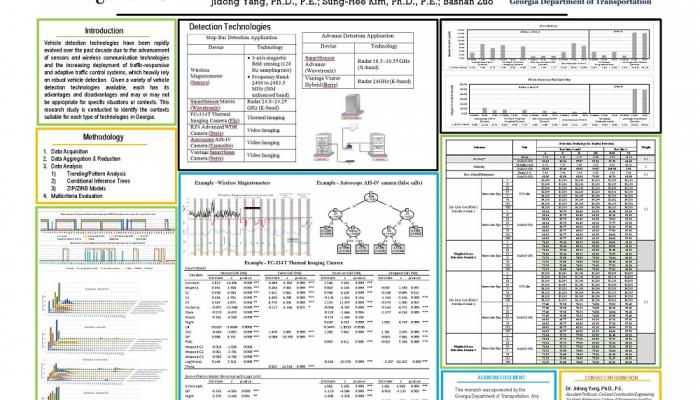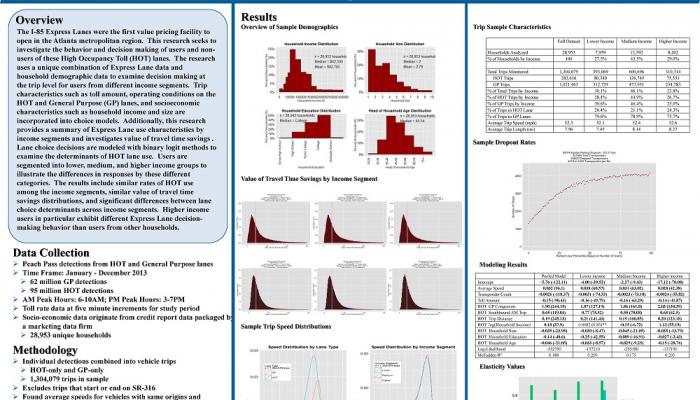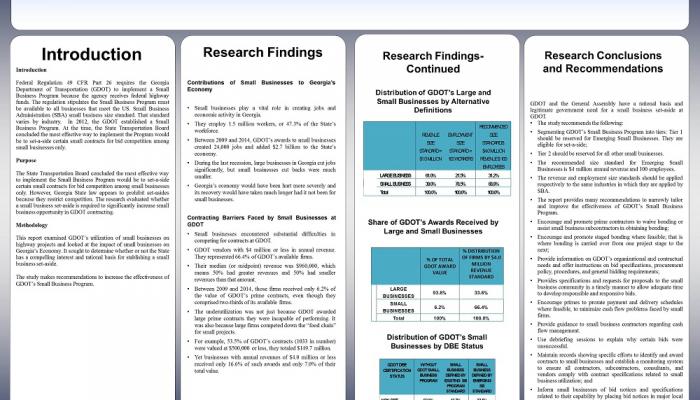Project Details:
Evaluation of Vehicle Detection Technologies for Applications in Georgia
PI:
Jidong Yang, Sung-Hee Kim, Bashan Zuo
Participating University:
Kennesaw State University

Type:
Asset Management
Project Description:
The objective of this project is to design, implement and test an emergency message system using multi-hop vehicular communications among vehicles, pedestrians, and bicyclists.
Posters:
Web Links:
For more information on this project, click here.
Project Details:
Effective Capacity Analysis and Traffic Data Collection for the I-85 HOV to HOT Conversion
PI:
Adnan Sheikh, Aditi Misra, Randall Guensler
Participating University:
Georgia Institute of Technology

Type:
Asset Management
Mobility
Project Description:
To (1) perform data collection and analytical efforts that support the regional conversion of HOV lanes into high-occupancy toll (HOT) lanes, and (2) assess the impacts of HOT conversion on the I-85 corridor.
Posters:
University(ies):
Georgia Institute of Technology
Project Description:
Well-designed transportation investments have many short-term and long-term economic benefits. They can spur economic growth, create jobs, boost labor productivity and profitability, increase efficiency and accelerate local and regional economic development. Given the anemic job growth in the US economy today, and the growing fiscal constraints imposed on public agencies, policy makers and stakeholders are increasingly demanding that impacts of infrastructure investments be quantified. This would allow scarce resources to be allocated more efficiently and effectively.
This study measures the impact of GDOT’s highway expenditures on economic activity in the State of Georgia. The study examines impacts at three levels (1) Statewide impacts; (2) Impacts within GDOT Highway Districts; and (3) County impacts. The timeframe of the analysis is January 2009 through May 2013. During this period, GDOT spent $3.6 billion on highway projects. Each project expenditure had a ripple effect on economic activity in local areas.
Posters:
SearchShowCAPTCHA: no challenge enabled
University(ies):
Georgia Institute of Technology
Project Details:
Evaluation of GDOT’s Small Business Program and Overconcentration in Certain Procurement Categories
PI:
Thomas Boston
Participating University:
Georgia Institute of Technology

Type:
Policy/Workforce
University(ies):
Georgia Institute of Technology
Project Description:
The objective is to assist Georgia Department of Transportation (GDOT) in developing the most effective policies and strategies for implementing a set-aside program and to assist GDOT in implementing the most appropriate policies and strategies for reducing the burden of overconcentration on non-DBEs.
Posters:
Web Links: